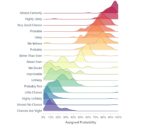
by tyler garrett | May 27, 2025 | Data Management
In today’s digital landscape, organizations face an ever-growing challenge to safeguard their data without stifling agility and innovation. Data, rightly considered the lifeblood of modern enterprises, holds unmatched power coupled with significant risks when handled carelessly. As enterprises pursue their journey toward becoming data-driven organizations, effective metadata governance strategies like metadata-driven default security classification become critical. This innovative security approach leverages metadata attributes embedded within your data assets to ensure appropriate measures of classification and protection from inception to analytical use. Imagine a framework that intuitively classifies sensitive information the moment it enters your data ecosystem—minimizing manual intervention, streamlining compliance, and enabling teams to focus on deriving actionable insights. Let’s explore the promise of metadata-driven data governance and why it should become foundational to your organization’s data management strategy.
Understanding Metadata-Driven Security: The Fundamental Concept
Metadata-driven security revolves around utilizing structured metadata—information describing or contextualizing your data assets—to automatically classify, tag, and secure information as it enters or moves through data pipelines. Rather than solely relying on human oversight, this smart, policy-based approach employs pre-defined rules to enforce security classifications instantly. For example, a data asset’s metadata attributes, such as origin, format, sensitivity level, or business context, intrinsically trigger the right policy actions to safeguard this information appropriately. Employing such a metadata-driven approach closely aligns with proactive data governance best practices, drastically reducing vulnerabilities typically introduced by manual processes.
The beauty of metadata-driven default security classification is its automation potential—providing organizations significant cost savings and greatly reducing human error. Rather than depending on security officers to evaluate each incoming dataset carefully, the metadata-driven mechanism instantaneously classifies data sets based upon clearly defined metadata rules, significantly streamlining the overall classification process. Leveraging metadata for security classification aligns intuitively with today’s data analytics environments, often characterized by high computational complexity, scale, and a thoughtful focus on efficient, effective governance.
Implementing metadata-based classification aligns seamlessly with strategies to cultivate a robust data-driven culture, fostering disciplined but empowered decision-making anchored in data insights.
Why Organizations Need Metadata-Based Data Classification
The exponential growth of organizational data—in terms of sheer volume, velocity, and variety—makes manual classification increasingly impractical and prone to oversight errors. Traditional approaches to security often fail to keep pace with modern business intelligence projects, large-scale analytics initiatives, or complex datasets utilized across predictive analytics and machine learning projects. At its very foundation, metadata-driven classification quickly closes valuable data governance gaps by systematically providing accurate and auditable classification across complex data environments.
Modern organizations pursuing analytical maturity—such as leveraging predictive models in demand forecasting and supply chain optimization—require a secure yet flexible data management environment. Metadata-driven classification helps organizations confidently support innovation projects, predictive analytics tasks, and data visualization capabilities, knowing sensitivity concerns are systematically addressed.
Beyond compliance and risk mitigation, metadata-based security also profoundly impacts organizational efficiency. Instead of teams investing substantial time into tedious classification exercises, a robust metadata-driven strategy significantly streamlines classification workflows. This frees your team’s cognitive and operational bandwidth to efficiently execute intensive ETL processes, utilize long-running transaction management in ETL workflows, and transform raw data into actionable insights at speed and scale.
How a Metadata-Driven Model Enhances Data Governance Capabilities
Utilizing a metadata-driven approach demonstrates maturity and commitment to strategic data governance. Metadata-defined security practices foster clear, auditable records of classification processes, further supporting compliance efforts and enabling your data governance teams to efficiently identify, review, and remediate potential risks proactively. Metadata, as descriptive information, becomes critically valuable for auditing, tracking, and user education—fundamental components of the broader data governance framework.
By leveraging clearly documented metadata, decision-makers strengthen data ethics, data transparency, and accountability at every organizational level. Metadata-driven default classification automates aspects of data governance, meaning fewer resources need to be allocated toward administrative activities, manual policy enforcements, and routine verifications. Moreover, automated metadata-driven practices align data governance seamlessly with advanced analytical workflows, as exemplified by complex projects like building custom visualizations utilizing custom legend design for complex visual encodings or sophisticated location intelligence integrations employing spatio-temporal indexing structures.
Metadata-driven methods thus strengthen overall governance by providing clarity, minimizing ambiguity, and improving compliance and security posture, empowering decision-makers with robust frameworks that scale alongside constantly evolving organizational analytics maturity.
Implementing an Effective Metadata-Driven Classification Strategy: Key Factors
To reap the immense benefits of metadata-driven security classification, enterprises must focus strategically on certain key implementation considerations. The accuracy, integrity, and completeness of your metadata directly impact the effectiveness of any classification strategy dependent upon it. Therefore, organizational data stewards and security officers must take a collaborative approach to identify, document, and standardize critical metadata attributes essential for consistent classification.
Another essential element to successful implementation is selecting robust technology and infrastructure that can effectively support metadata-driven choices. Modern cloud architectures, containerized workflows, and modern data platforms simplify the technical logistics around metadata-driven data protection workflows. Best practices outlined in The Data Engineer’s Guide to Infrastructure as Code offer useful strategies for successfully provisioning secure, metadata-aware data storage environments.
Additionally, choosing metadata strategies compatible with existing systems and investing in comprehensive employee training ensures high adoption rates and sustained success. The approach should properly integrate into your organization’s existing data analytics stack, seamlessly embedding comprehensive classification within ongoing transformations of raw data into sophisticated analytical solutions and visual storytelling, exemplified by mastering and applying the art and science of data storytelling.
Solving Common Challenges in Metadata-Driven Classification
Even the most advanced data management solution encounters challenges. Issues common to metadata-driven strategies range from incomplete or inaccurate metadata to inconsistent standards and policies across teams or departments. Data silos, legacy systems, and outdated data backfill approaches can further complicate metadata-driven efforts. As you elevate your metadata systems, using robust automation and clearly defined metadata schema helps solve challenges around consistency and accuracy.
Employing strategic Backfill Strategies for Historical Data Processing allows organizations to remediate historical metadata deficiencies systematically and progressively expand your metadata-driven reach backward through legacy data repositories. Strong executive sponsorship, clear communication, ongoing education, and alignment across technical and business teams promote organizational buy-in, dramatically reducing issues related to ambiguity in processes or confusion around roles and responsibilities.
Remember, metadata itself requires proactive governance—continuous evaluation, adjustment, and modernization—to remain optimally aligned with imminent organizational shifts and evolving security landscapes. Engaging trusted consulting expertise to navigate these challenges greatly accelerates successful implementation outcomes. For organizations seeking actionable strategic advice and professional guidance implementing modern data management capabilities like metadata-driven default classification, our team provides in-depth knowledge and extensive hands-on experience, from advanced analytics frameworks to innovative visualization approaches through advanced Tableau consulting services.
Conclusion: Secure, Agile, and Dynamic Metadata-Driven Classification
Metadata-driven default security classification represents an elegant balance between powerful governance control for organizational robustness and agility-enabled innovation. Allowing firms to automate their data classification processes based upon clearly defined metadata criteria establishes instant, reliable classification practices, significantly improving efficiency, accuracy, and compliance. Most importantly, it enables enterprises to achieve the holy grail of data sovereignty: secure and empowered use for ongoing digital transformation, analytics maturity, and innovation.
Ultimately, adopting a metadata-driven approach establishes enriched data environment standards—creating long-term foundations enabling sustained competitive advantage through secure, strategic data use.
Tags: metadata-driven security classification, data governance, data-driven culture, analytics strategy, advanced data management, compliance automation
Thank you for your support, follow DEV3LOPCOM, LLC on LinkedIn and YouTube.

by tyler garrett | May 26, 2025 | Data Visual
Decision-makers drowning in voluminous datasets understand the critical importance of clear and informative visualizations. Conceived with dense analytics in mind, horizon charts rise as a powerful solution designed specifically for displaying complex time series data clearly, efficiently, and concisely. Today, issues such as data saturation make interpreting thousands of data points seemingly impossible. Horizon charts, however, not only bring clarity amidst complexity—they also transform how businesses interpret their data to drive significant strategic decisions. Whether you’re navigating financial transaction streams or digging deeper into performance monitoring statistics to proactively identify potential issues, horizon charts offer a distinct advantage. Here we explore what makes this visualization technique crucial, the challenges it solves for enterprises today, and how adopting horizon charts can give decision-makers a competitive edge in analytics and innovation.
Understanding Horizon Charts and Their Strategic Value
To understand why horizon charts matter in today’s data-driven environment, let’s first demystify the concept. At their core, horizon charts are a space-optimized chart type, purpose-built for quickly and accurately visualizing dense time series data. Unlike traditional line charts, horizon charts capture multiple time series layers simultaneously, giving strategists and analysts immediate insights—something increasingly valuable when time constraints and quick decision-making are pivotal.
From a strategic standpoint, horizon charts transform vast quantities of complex data into manageable visuals. By presenting data in layered bands that emphasize deviations from baselines, less horizontal space is used compared to other display methods, all while increasing the density of information presented. For senior advisory teams and executives that must rapidly interpret trends, recognize patterns, and understand anomalies, the horizon chart provides an unparalleled viewpoint.
Imagine your analysts attempting to understand fluctuations with traditional line charts when they’re dealing with high-density data, clustered tightly together and increasingly difficult to decipher. Introducing horizon charts can drastically cut through visual clutter, enabling faster, clearer decisions grounded in accurate interpretations of data fluctuations. In contexts such as MySQL consulting services, where time-sensitive database metrics monitoring is essential, these charts are invaluable for proactively identifying unexpected performance trends and ensuring optimal database health.
The Problem with Dense Data Visualization & How Horizon Charts Solve It
Among decision-makers relying on cutting-edge analytics, dense data visualization presents several substantial challenges. Conventional charts become impractical due to overwhelming data density, cluttering analysis outputs and hindering valuable insights. Datasets mapping financial market activities, cloud infrastructure utilization, or server response times consist often of thousands of data points—detailed metrics impossible to interpret effectively using legacy visualization techniques. Even excellent visualization tools, like those listed among our selection of future-forward analytics platforms in the top 5 data visualization tools for 2025, must be carefully chosen for their capability to handle data density effectively.
Herein lies the true strength and innovation behind horizon charts. The genius behind this visualization methodology resides in its fundamental approach: converting continuous value differences into coded horizontal layers of intensity and direction. Color shading represents positive or negative deviations, enabling analysts and decision-makers to perceive data saturation rapidly—even across extended time frames—from a remarkably condensed visualization.
While other visualization methods such as conventional bar charts or continuous line graphs force your analysts to sift tediously through overcrowded visuals, horizon charts inherently clarify key insights. By immediately highlighting significant data deviations from the norm through distinct bands, horizon charts effortlessly eliminate non-essential noise, reducing misinterpretation risk and drastically shortening decision-making speed.
Enhancing Analytics Efficiency with Horizon Charts Integration
Adopting horizon charts into analytical frameworks is a proactive strategy that yields immediate returns regarding clarity, efficiency, and accuracy. When integrated effectively within analytics workflows, horizon charts streamline processing times for vast datasets, drastically improving insight generation and reducing unnecessary cost overheads tied to analytics inefficiencies.
For instance, if your company is looking to visualize and analyze large dataset results from automated Continuous Integration and Continuous Deployment (CI/CD) testing pipelines, pairing horizon charts with a comprehensive automated data testing strategy for continuous integration simplifies identifying anomalies at glance. Versatility in applications and tight integration with leading major data technologies—from Node.js data pipelines (discussed deeply in sending Auth0 data directly to Google BigQuery using Node.js) to high-performance database analytics—means horizon charts adapt seamlessly in multiple technical contexts.
Leveraging horizon charts not only simplifies dense data exploration but also reduces stress on your teams. They no longer grapple unnecessarily with visual clutter and distractions. Instead, your experts easily spot issues quickly, finding underlying causes and solving them promptly—an undisputable advantage in highly competitive business environments increasingly dependent on real-time analytics.
Leveraging Horizon Charts in Real World Scenarios
Real-world implementation best showcases the true value horizon charts bring to organizations. Consider computational storage workloads: when your infrastructure processes data directly at the storage layer—a concept explored thoroughly in our article on computational storage solutions—monitoring device-level analytics rapidly across dense data streams is critical. Horizon charts display performance metrics effectively, highlighting irregular activity clusters or conditions clearly and succinctly, enabling proactive infrastructure optimizations.
Similarly, industries including finance, healthcare, and logistics benefit immensely from adopting horizon charts into their analytical arsenals. Financial analysts swiftly identify trading pattern shifts without distractions; healthcare practitioners validate predictions about patient data trends without confusion from data density overload; logistics specialists effortlessly determine optimal resource allocations, pinpoint service degradations in real-time, and ultimately empower strategic optimization decisions.
Businesses leveraging Tableau Desktop software for daily analytics—briefly introduced in our detailed introductory guide, Tableau Desktop and Tableau Data Extract capabilities—can seamlessly integrate horizon charts into their already robust visualization portfolios. This integration further elevates Tableau’s capability to visualize densely packed datasets clearly and intuitively, expanding analytical capabilities without requiring engine or workflow overhaul.
What You Need to Know Before Implementing Horizon Charts
Successfully implementing horizon charts into your organization’s analytics toolkit requires strategic preparation. To begin, ensure your underlying data pipeline processes are matured and capable of confidently handling dense analytics streams effectively. Consider methodologies such as Extract-Transform-Load (ETL) to ensure clean, reliable data sources—extensively covered in our resource A Beginner’s Guide to ETL (Extract, Transform, Load).
Furthermore, horizon chart implementations demand clearly set baselines and well-defined thresholds. Without these crucial benchmarks, visual outputs may lack critical clarity necessary for rapid, accurate analysis. Thoughtful color selections (usually gradients indicating deviations) streamline interpretation across user groups, ensuring different stakeholders quickly grasp key insights intuitively.
Finally, consider your technology infrastructure environment. Enterprises leveraging ephemeral computing—an optimal practice explored here Ephemeral Computing for Burst Analytics Workloads—or those attempting to optimize performance monitoring systems, including disabling unnecessary services (such as documented explicitly for Service Update Orchestrator Service (UsoSvc)), should ensure data ingestion sources offer timely, complete, and clean data access. This ensures horizon charts accurately reflect timely insights, empowering the coherent decisions your team needs.
Final Thoughts: An Innovative Visualization Tool for Forward-Thinking Organizations
In a marketplace continually bombarded with increasingly intricate and dense datasets, strategic tools enabling clarity and insight are no longer optional—they’re imperative. Horizon charts empower organizations to understand complex time series datasets with unmatched clarity and precision. Properly deployed, horizon charts strategically enhance analysis capabilities, drive smarter decisions faster, and increase overall analytics proficiency within your organization.
In data-rich environments that demand instant insight, horizon charts transform visualization from merely a tactical step to an invaluable strategic asset. As leaders in data and analytics consulting, we actively endorse horizon charts as pivotal components within innovative analytical strategies. By clarifying data complexity, horizon charts rapidly equip decision-makers with actionable insights—perfect for businesses that believe advanced visualization is integral to long-term competitive advantage.
Thank you for your support, follow DEV3LOPCOM, LLC on LinkedIn and YouTube.

by tyler garrett | May 26, 2025 | Data Management
In today’s highly interconnected digital landscape, organizations across industries increasingly rely on sharing sensitive data to achieve mutual objectives. Whether supporting collaborative research in healthcare, ensuring seamless operations in complex supply chains, or fostering innovation through digital ecosystems, secure and trusted data sharing is more critical than ever. Implementing a robust Data Trust model empowers your organization to systematically exchange protected information while simultaneously guarding privacy, compliance, and trustworthiness. Armed with strong governance, clear accountability, and advanced data management practices, implementing strategic Data Trust solutions positions your organization to unlock deeper insights and foster innovation without sacrificing security. Let’s examine best practices, actionable insights, and strategic frameworks your team can leverage to achieve reliable and protected information sharing with confidence and efficiency.
What is a Data Trust and Why is it Crucial?
A Data Trust represents a trusted governance structure in which distinct legal entities agree upon and follow clearly defined rules for handling, exchanging, and processing sensitive data. Similar to a fiduciary trust used in finance, a Data Trust provides oversight by a neutral entity responsible for enforcing adherence to predetermined standards, rules, and expectations regarding data security, privacy, compliance, accountability, and access controls. Implementing this structure fosters stakeholder trust and mitigates risks inherent with sensitive or regulated information like healthcare, financial, or personally identifiable information (PII). Through a Data Trust, partners gain assurance about compliance with regulations such as GDPR, HIPAA, or CCPA from the foundational trust governance frameworks implemented upon inception.
The establishment of a clearly defined Data Trust also significantly reduces ambiguity, misunderstandings, or disputes about data usage and sharing agreements among stakeholders. By enforcing strong governance and data stewardship principles maintained universally across organizations within the ecosystem, your Data Trust can streamline and optimize data utilization for mutual benefit without neglecting individual responsibilities or regulatory obligations. Implementing robust governance procedures alongside well-documented effective data documentation strategies allows your organization to sustainably grow trust and leverage shared information resources, driving long-term collaborative benefits across your data partner landscape. Simply put, investing in Data Trust implementation establishes the bedrock of a successful information-sharing venture.
Key Considerations for Implementing a Data Trust Model
Clearly Defined Data Governance Frameworks
Essential to successful Data Trust implementation is establishing robust and transparent data governance mechanisms. A well-crafted framework explicitly defines data ownership rights, access privileges, responsibilities, compliance requirements, and key performance metrics. This clarity ensures every stakeholder understands their roles and the circumstances under which protected information is used and shared. Organizations that invest the time to build solid governance procedures experience fewer conflicts, easier regulatory audits, and smoother operational processes when handling sensitive data.
Consider actively involving technical and strategic stakeholders in defining your governance model to ensure alignment with organizational goals and external compliance standards. Developing clearly articulated data access policies using trusted database technologies, such as industry-standard MySQL, benefits from expert guidance through specialized MySQL consulting services. Implementing data governance frameworks guided by specialists results in robust databases and secure data processes tailor-made for your organization’s long-term data sharing strategies.
Flexible Data Infrastructure Design
Effective Data Trust implementation demands infrastructure that can reliably adapt to evolving data schemas, formats, and system requirements. As more parties join your data ecosystem and regulatory standards change, you need the agility to accommodate shifting standards and expectations. Developing infrastructure flexible enough to permit smooth collaboration helps future-proof your Data Trust, reducing costs associated with major platform rebuilds, data migration project risks, or disruptions to access controls.
Leveraging innovative design strategies such as establishing systemic guidelines for schema evolution patterns with backward compatibility provides critical adaptability. Additionally, learning how and when to implement various data platforms by navigating decisions regarding data lakes versus traditional data warehouses brings strategic advantage and stability to your infrastructure approach. Appropriate flexibility integrated into your Data Trust architecture guarantees preparedness for future technological developments, new data schemas, and changes in business strategy or regulatory requirements.
Advanced Privacy & Security Strategies
When handling sensitive, protected data, your Data Trust must incorporate multi-layered security protocols and privacy tools dedicated to safeguarding participant information. From strict access control policies and tokenization techniques to encryption standards and advanced anomaly detections, your security approach should be comprehensive and layered. Leveraging sophisticated detection methods, including proactive data skew detection and handling in distributed processing, ensures early resolution of potential privacy and security threats, safeguarding organizational and stakeholder trust in your Data Trust operations.
Equally critical are advanced, privacy-driven solutions ensuring consent management and regulatory compliance. Integrating tools to achieve an optimal balance in balancing data collection with user privacy proves invaluable in implementing a compliant Data Trust. By prioritizing rigorous security and privacy practices within your data sharing approach, you establish necessary credibility and trust among stakeholders, ensuring long-term project value and sustainability.
Integrating Analytics & Machine Learning Effectively
One significant advantage of a properly implemented Data Trust is the streamlined utilization of advanced analytics and machine learning solutions across collaborating stakeholders. Implementing structured, governed data repositories can unlock innovative machine learning use-cases previously inaccessible or too risky due to mistrust or privacy concerns. Formal data governance enables improved alignment of analytics outputs and actionable insight-sharing processes across the diverse community in the Data Trust.
To maximize this opportunity, incorporate best-practice principles for machine learning pipeline design for production environments. Effective pipeline design ensures models developed on shared protected data comply with governance expectations, meet regulatory requirements, and achieve trustworthy results that stakeholders can confidently leverage for transformational decisions. A strategic approach to integration of analytics demonstrates the tangible benefits of your Data Trust framework to partners, creating lasting business benefits for all participants.
Navigating Regulatory Challenges & Compliance Risks
Successfully implementing a Data Trust involves proactive navigation of regulatory complexity and compliance requirements surrounding sensitive and protected data. Understanding different regional and industry-specific obligations informs crucial policy-setting and ensures legal protection across partner organizations. Engaging experienced data governance specialists who deeply understand compliance implications throughout the Data Trust lifecycle can make all the difference in preventing costly regulatory breaches or non-compliance penalties.
Carefully document processes, purpose-driven policies, and robust technical architectures. Applying rigorous documentation best practices as highlighted in our guide to effective data documentation strategy allows your organization to effectively address regulatory audits and demonstrate transparent compliance oversight. Organizations that strategically navigate regulatory frameworks build stakeholder confidence in your Data Trust, promoting wider adoption and greater participation across industries.
Implementing Data Trust as a Strategic Advantage
When thoughtfully designed and successfully deployed, a Data Trust represents more than compliance or risk mitigation—it can provide a significant competitive edge, support innovation, and deepen strategic partnerships with ecosystem participants. Leveraging state-of-the-art technical solutions such as functional programming paradigms for resilient data transformation logic allows organizations to develop robust, maintainable data processes that withstand regulatory changes and rapid business evolution.
Ultimately, placing Data Trust implementation at the core of your protected information sharing strategy positions your organization ahead of competitors, provides a risk-managed environment for innovation, and establishes the foundation for trusted data ecosystems. With the right approach, strong governance, advanced security, and effective analytics integration, your Data Trust will become a driving force in achieving strategic business goals and sustained growth.
Thank you for your support, follow DEV3LOPCOM, LLC on LinkedIn and YouTube.

by tyler garrett | May 25, 2025 | Data Visual
In today’s fast-paced digital landscape, organizations frequently depend on vast, intricate data sets to drive decisions, optimize performance, and innovate. However, even the most advanced data analytics can fail to yield their full potential if the data displays are overly complex, creating cognitive strain on users. As decision-makers, data scientists, and analysts navigate a sea of numbers, charts, and dashboards, it’s essential to design with cognitive load theory at the forefront. By embracing cognitive-friendly interfaces, organizations can empower clearer decision-making, improve accuracy, and reduce the potential for costly human errors. Let’s explore how your enterprise can strategically reduce cognitive load, optimize informational clarity, and maximize value from complex data displays.
Understanding Cognitive Load Theory to Enhance Data Display Design
To effectively optimize user interaction with data platforms, it’s crucial first to understand cognitive load theory. Cognitive load refers to the amount of working memory resources consumed during tasks. According to cognitive psychology, user attention and processing capabilities are finite. Thus, the more complex and unintuitive the data presentation, the higher the cognitive load. When decision-makers must spend mental energy deciphering or interpreting cumbersome displays, their ability to make strategic, accurate, and swift choices suffers.
Designing your analytical dashboards with cognitive load theory in mind involves assessing intrinsic, extraneous, and germane cognitive loads. Intrinsic load is inherent difficulty related to data complexity; germane load pertains to the intellectual engagement beneficial for processing information; but the critical factor we can strategically address is extraneous cognitive load, essentially unnecessary distractions or poorly structured layouts. Strategically reducing extraneous load means incorporating straightforward, intuitive designs and logical information hierarchies. This strategy frees cognitive bandwidth, directing decision-maker attention onto key insights rather than deciphering poorly organized interfaces.
For example, market basket analysis can become unnecessarily complicated if presented without logical visual groupings. By ensuring essential insights appear clearly, analytics teams guide user cognition towards understanding complementary product relationships rather than straining mental resources to decode obscure visualizations.
Simplifying Complex Data with Strategic Visualization Techniques
Complex data often mandates sophisticated visualization techniques capable of transforming dense numerical insights into clear visual narratives. However, not every visual method equally reduces cognitive load. Strategic selection of visualization techniques can either markedly alleviate or inadvertently add cognitive overhead. By leveraging proven, intuitive data visualization methods, your organization can effectively communicate complex insights without overwhelming the user.
Accessible visualizations, such as bar graphs, line charts, heatmaps, and scatterplots, immediately translate complex data fields into visual structures easily interpreted by the human brain. Meanwhile, choosing overly elaborate or ambiguous visual forms, such as multi-layered 3D charts or excessive color variations without clear purposes, introduces unnecessary visual clutter and confusion.
Additionally, employing best practices such as clear chart labeling, simplified color schemes, and a consistent visual vocabulary greatly reduces cognitive overhead. For instance, visualizing frequent problems like data skew detection in distributed processing becomes accessible and actionable when using intuitive heatmaps supported by properly annotated visual cues. Users easily identify concerning areas, granting swift operations adjustments without mental overexertion.
Reducing Cognitive Load Through Automation and Intelligent Interface Design
Automation and intelligent interface designs can significantly minimize cognitive load, streamlining workflows and ensuring users focus more effectively on analytical decisions instead of repetitive or manual queries. Smartly integrated automation reduces repetitive task burdens, allowing strategic teams to allocate energy towards higher-value analytical insights rather than routine data maintenance.
Intelligent, automated dashboards, powered through innovative practices like AWS-managed analytics solutions, offer dynamic, real-time visualizations that respond quickly to user interactions and queries. Through such strategic architecture—highly responsive and scalable interfaces—user cognitive resources are freed to connect cross-domain insights rather than manually assembling fragmented data points.
Additionally, robust semantic layers provided by innovations like embeddings as a service, streamline data interpretability by linking data meaningfully across multiple queries and visualizations. Reusable semantic embeddings transform raw information pools into highly intuitive, conceptually cohesive interfaces, effortlessly connecting analytical insights across dashboard views and minimizing cognitive load associated with context-switching.
Ensuring Data Quality and Performance for Optimal Cognitive Engagement
No matter how carefully designed the interface, poor data quality or inefficient processing undermines clarity and elevates cognitive complexity. Investing in superior performance optimization and maintaining high data quality standards ensures decision-makers can trust analytical outputs without second-guessing validity, leading to reduced cognitive strain and faster engagement.
Minimize cognitive load through strategic database query optimization by following advanced techniques as discussed in our resource on optimizing database performance for analytical queries. Furthermore, establishing clearly defined database structures through the careful definition of new table structures in SQL enhances data processing efficiency and accessibility—allowing analytical tools and dashboards to remain responsive and trustworthy.
Additionally, prioritizing effective data governance to proactively address issues captured in our article on Data Quality: The Overlooked Factor in Profitability, reinforces user trust and cognitive ease. When analysts and users trust underlying data workflows, cognitive effort remains squarely focused on generating actionable, valuable insights—rather than validating questionable information validity.
Employing Advanced Data Fusion and A/B Testing to Inform Interface Improvements
Leverage powerful analytical techniques such as multi-modal data fusion and A/B testing to strategically refine complex display interfaces. Multi-modal data integration, as discussed in multi-modal data fusion strategies for comprehensive analysis, offers a robust way to streamline complex information streams. Aggregating and integrating diverse data sources into a unified, comprehensible display significantly reduces cognitive overload and prepares analytical teams with precisely curated insights.
Furthermore, A/B testing methodologies detailed in The Science of Optimization: How A/B Testing Can Improve Your Business enable precise measurement of user cognitive responses to different interface designs. Assessing user interactions empirically helps decision-makers confidently choose visualizations and interfaces proven to minimize cognitive load.
This combined analytical strategy—fusing multiple data streams for comprehensive insight coupled with controlled testing of user responses—ensures data dashboards and interfaces evolve intelligently. Iteratively honing the user experience by directly addressing cognitive load pain points empowers clearer interpretations, informed decisions, and higher operational efficiency.
Implementing Best Practices to Sustain Cognitive Load Optimization
Designing well-balanced data displays optimized for cognitive load reduction requires sustained attention beyond initial implementation. Strategically embedding cognitive-conscious considerations into your development processes, recruiting trustworthy and skilled engineers who specialize in analytics and AI solutions (discovering the right software engineers), and routinely revisiting interface designs ensures enduring success.
Establishing rigorous user feedback loops, regular cognitive workload assessments, and ongoing performance analysis enables continuous improvement. By actively tracking cognitive friction points across dashboards and visualizations, organizations can refine user experiences proactively. Adoption of standardized visualization principles, automated analytics QA protocols, routine review processes, and best practice training among analytics team members undoubtedly fosters sustained interface agility and significantly reduces long-term cognitive overhead.
Ultimately, structuring processes and teams to consistently consider cognitive load optimization ensures analytics display designs remain powerful, impactful, and transformative. By successfully minimizing cognitive complexity, enterprises empower key stakeholders to consistently access richer insights, fuel clearer decisions, and drive meaningful innovation forward.
Thank you for your support, follow DEV3LOPCOM, LLC on LinkedIn and YouTube.

by tyler garrett | May 25, 2025 | Data Visual
In today’s data-driven landscape, clarity in communication often hinges on visualization consistency. Executives rely on accurate, cohesive visuals to swiftly draw insights and identify strategic opportunities. Yet, many organizations stumble in creating consistency across their various reports and dashboards. When multiple teams contribute without defined guidelines, visual confusion and misinterpretation of data become inevitable. As trusted experts in data analytics at Dev3lop, we’ve witnessed firsthand how strategic decisions can be derailed by simple inconsistencies in visibility standards. In this article, we explore proven patterns and best practices to help your organization maintain consistency in visualizations across different reports, fostering strategic clarity and ensuring decision-makers stay confidently informed.
Why Visualization Consistency Matters in Business Intelligence
Visualization consistency isn’t merely a cosmetic concern; it’s foundational to effective business intelligence (BI). Consider powerhouses like Amazon, which leverage visualization consistency extensively throughout their diverse reporting structures. Adopting uniformity in visual presentation across your reports streamlines understanding, enhances readability, and rapidly facilitates impactful data-driven decisions. Conversely, inconsistencies or deviations in visualization patterns lead to confusion, inefficiencies, and potentially costly misinterpretations of critical business metrics.
When reports from one quarter differ markedly in format or color schemes from another, executives and stakeholders find themselves wasting precious time recalibrating their analytical perspective rather than absorbing insights. On the contrary, standardized visualization patterns help foster trust, clarity, and quicker onboarding of stakeholders onto new data platforms or analytics projects. This consistency directly supports improved productivity and minimizes the friction associated with internal transitions, onboarding new data teams, and reshuffling organizational responsibilities.
From our experience in managing complex ecosystems like those using Amazon Redshift platforms, adhering to thoughtful visualization standards considerably elevates user experience. Consistent report presentation helps stakeholders more effectively grasp insights, even as underlying data complexity increases. Organizations that prioritize visualization consistency align themselves toward achieving strategic clarity, enabling quicker transformations from insight into action.
Identifying Common Visualization Inconsistencies Across Reports
Effective solutions begin by clearly defining the problem, and achieving visualization consistency is no different. Typically, businesses experience visualization inconsistencies owing to data silos, fragmented teams, or unclear governance around data visualization best practices. Recognizing these common challenges is the first crucial step toward overcoming them.
Often, data silos are at the root of visual chaos. When teams operate independently or rely on disparate visualization tools and strategies, layouts, color schemes, labeling conventions, and metrics become inconsistent. As we’ve highlighted previously, learning how to identify and eliminate data silos can help significantly to standardize reporting practices. Similarly, an underperforming or overwhelmed data team might seem responsible for inconsistencies, yet deeper analysis often reveals project management gaps. Strengthening project management practices significantly improves visualization consistency by clarifying roles, expectations, and collaborative standards.
Another common inconsistency arises from the unchecked proliferation of software features or customizations. It’s important to recognize that adding too many visual features can harm comprehension rather than help. Understanding when to restrict feature adoption can keep visualizations clean, targeted, and beneficial to stakeholders. Through clear guidelines and controlled tool usage, businesses can effectively manage diverse teams and reporting environments while maintaining cohesion and clarity of visualization output.
Best Practices to Establish Visualization Consistency Standards
Establishing visualization consistency does not happen by chance—it requires conscious effort, strategic foresight, and clear guidelines. Creating well-defined visualization best practices begins with standardizing visual formats. Teams must align on key visualization aspects, including colors, fonts, legends, scales, metric definitions, and layout grids. Visual symmetry across reports enhances comparative analyses and accelerates decision-making.
Additionally, leveraging advanced data management techniques, such as monorepo or polyrepo strategies for data platform code management, helps promote visualization consistency indirectly. Centralized coding repositories or consistently implemented data governance standards ensure uniform data definitions and structures—ultimately benefiting visual consistency downstream. Teams gain clarity when their underlying data structures and sourcing processes follow prescribed patterns, translating naturally into visualization uniformity.
Also, businesses should encourage standardized tool usage and uniform software installations across visual designers and analysts. By providing clear directions on tools like Tableau or Power BI and standardizing initial setups—such as our simplified Tableau desktop installation guide—companies ensure that teams approach visualization creation from a standardized, stable foundation.
Lastly, education and training remain essential. Conduct ongoing workshops and internal training sessions to reinforce visualization standards and governance among all stakeholders responsible for report generation. Socializing these best practices company-wide ensures everyone shares responsibility in maintaining visualization consistency.
Visualization Consistency and Its Effect on Workplace Efficiency and Engagement
Consistent visualization standards have implications beyond strategic decision-making—they directly impact productivity, employee retention, and workplace engagement. When employees repeatedly encounter conflicting visualizations and data definitions, frustration builds, negatively affecting morale. Conversely, consistent visuals simplify communication, ease collaboration, and strengthen stakeholder confidence, resulting in increased productivity and employee satisfaction.
Organizations aware of the correlation between effective business intelligence practices and employee satisfaction can leverage visualization consistency to support workforce retention initiatives. In our exploration of business intelligence’s impact on employee retention, we’ve demonstrated that clear data presentation dramatically improves employees’ day-to-day experience, eliminating unnecessary guesswork and confusion at critical decision moments.
Furthermore, consistency helps maintain high-quality data, significantly benefiting profitability. Poor visual consistency often hints at underlying data quality issues. By standardizing visuals, businesses can swiftly identify and reconcile data quality concerns. Over time, consistent visualization standards boost data trustworthiness—facilitating faster time-to-insight and a more robust analytics strategy overall.
Leveraging Technological Innovation for Better Visualization Consistency
Forward-thinking organizations access innovative BI tools and technologies to continually improve visualization consistency. Optimization advances in data processing, such as projection pushdown optimization, enable quicker delivery and deeper analysis of standardized visual outputs. Technological innovation also encompasses adopting centralized analytics platforms, automation, and self-service BI tools (such as Tableau Server or Power BI) that inherently encourage consistent visualization practices among diverse user groups.
Furthermore, consulting partnerships play integral roles in achieving sustainable visualization consistency. Depending on organizational culture, a strategic decision between choosing working with grassroots or enterprise-level consultancies influences successful adoption rates of visualization standards. A specialized consultancy will offer customized recommendations, governance frameworks, quality assurance processes, and training programs—all essential components in achieving long-term visualization consistency. At Dev3lop, our expert team aids organizations to seamlessly embrace these innovations, helping you maintain visualization consistency across complex reporting environments.
Conclusion: Consistency Fuels Confidence and Competitive Advantage
Visualization consistency translates directly into clearer strategic viewpoints, increased productivity, and stronger employee engagement. Organizations committed to visualization best practices position themselves to swiftly capitalize on insights, reduce internal confusion, and elevate business intelligence maturity. Whether through defined standards, improved project governance, or advanced technological innovations, the path to visualization consistency begins by recognizing its strategic value and addressing underlying governance, data quality, and managerial practices effectively.
Embrace visualization consistency to transform your reports into indispensable strategic tools. Collaborate confidently knowing your analytic visuals accurately represent your organizational reality—clearly, cohesively, and compellingly.
Tags: visualization consistency, business intelligence, data management, analytics strategy, dashboard design, data governance
Thank you for your support, follow DEV3LOPCOM, LLC on LinkedIn and YouTube.























